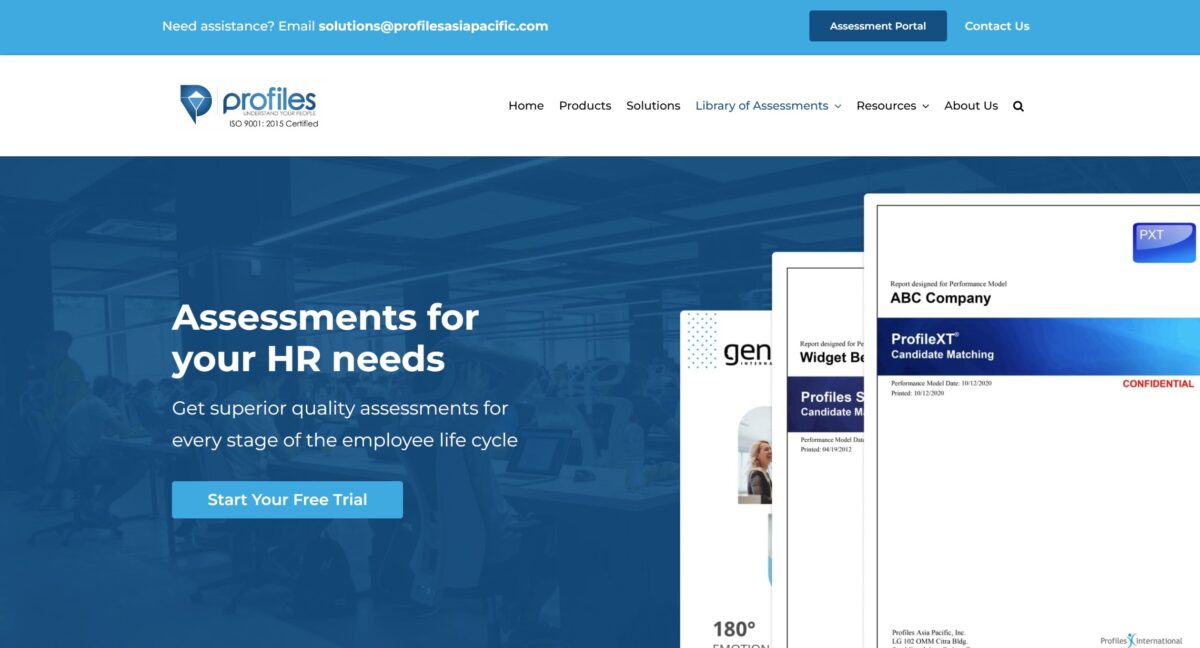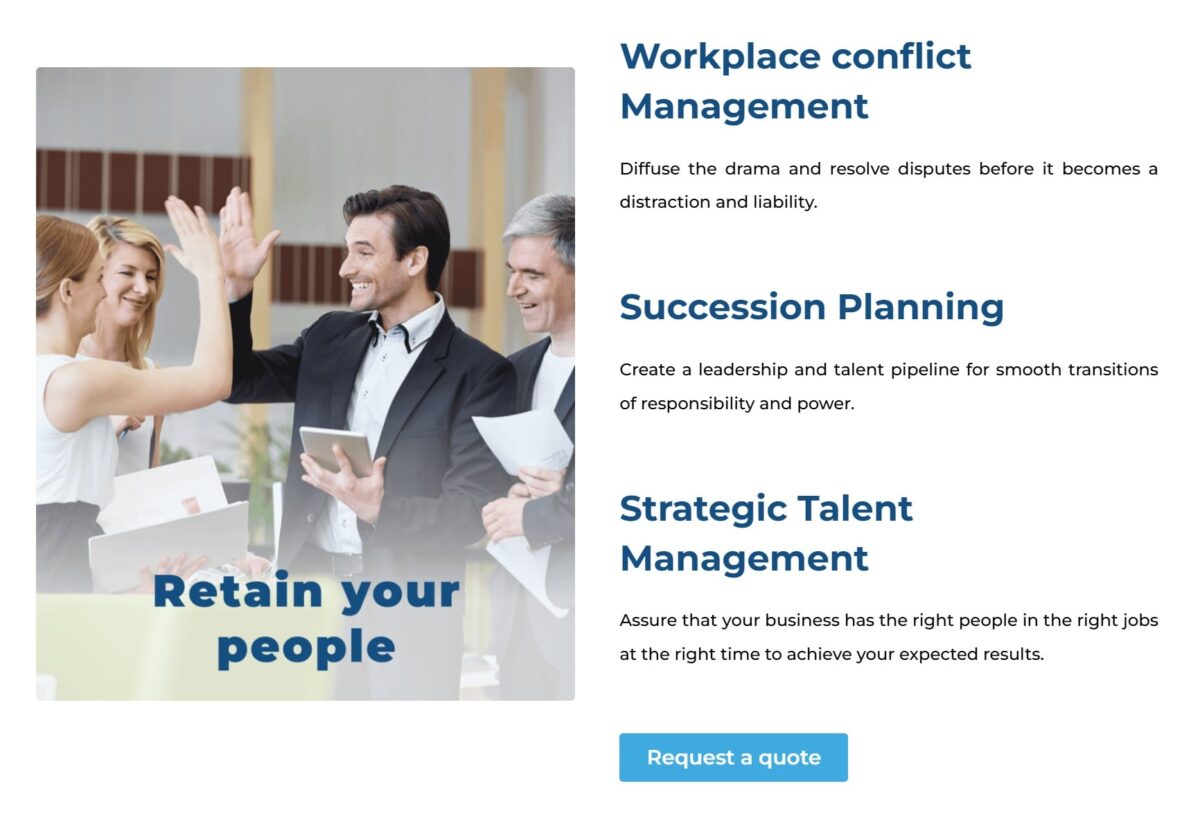“Strength lies in differences, not in similarities.” – Stephen Covey
In today’s interconnected world, the idea of diversity has gone beyond social movements. It has now become a strategic component of every business.
That’s because having a talent pool with various skills is vital, as every company needs different departments that specialize in specific fields.
At the same time, filling your workforce with people from diverse backgrounds isn’t just about complying with regulations and public relations. It adds another dimension to your organization, as it facilitates innovation and creativity.
Understanding and implementing workplace diversity, however, can be a challenge. To help you navigate it, we’ll explore the following:
- The significance of diversity in the workplace
- Its various forms
- Strategies to nurture it within your organization
What is workplace diversity?
To put it simply, workplace diversity refers to the inclusion of individuals from varying walks of life. It encompasses many aspects, ranging from ethnicity, gender, age, religion, to differences in education, socioeconomic status, and life experiences.
Promoting it in your company, meanwhile, revolves around creating an environment where all employees feel welcomed, valued, respected, and empowered to reach their full potential and contribute to the best of their abilities.
What are the different types of workplace diversity?
Workplace diversity, meanwhile, comes in different forms. Today’s companies, however, should make an effort to employ a healthy mix of multiple.
Demographic
Demographic diversity encompasses aspects such as race, ethnicity, gender, age, and the like. This is the most visible type and is often the first one considered in diversity, equity, inclusion, and belonging (DEIB) initiatives.
Cultural
This type of diversity, meanwhile, refers to the inclusion of employees from various cultural backgrounds. It enriches your workplace through having a melting pot of different perspectives and practices.
Cognitive
Every person has unique cognitive abilities. Diversity in this aspect involves differences in thought processes, problem-solving approaches, and decision-making styles amongst individuals. This type of diversity, meanwhile, can result in more innovation and creativity.
Functional
Each worker serves a specific function. This facet entails employing an assortment of people with distinct professional backgrounds and skill sets.
Workers from different departments or industries, for example, bring their specialized expertise and insights to the table.
Personality
Each individual possesses a distinct personality, and this type of diversity encompasses the traits and characteristics that influence their behavior.
A healthy mix of different characters, meanwhile, promotes good team dynamics and enables a wide range of approaches to teamwork and leadership.
Experiential
All your personnel will come from different walks of life. This form of diversity is based on their unique life experiences and backgrounds—aspects that influence how they perceive challenges and opportunities.
Why is diversity in the workplace important?
A diverse environment empowers each employee to showcase their individuality. Having such a workplace, meanwhile, allows your organization to enjoy multiple benefits.
Creative decision-making and problem-solving
Each employee possesses a unique point of view. A diverse workforce, meanwhile, offers different angles to complex problems, bringing creative solutions and various perspectives that let leaders make well-informed decisions.
Not to mention, people from different cultures have distinct ideas as well. For example, someone who has lived in France for 10 years can point out an upcoming French holiday and build a marketing event around it.
Multiple cultural viewpoints also ensure that ideas, initiatives, and issues are handled in a culturally-sensitive way.
Better employee performance and engagement
Feeling included, respected, and valued, regardless of background, is essential to employee engagement and job satisfaction.
In fact, McKinsey found that those who experience this at work are around 3x more likely than their colleagues to be committed to and excited by their companies.
Since they enable creative decision-making and problem-solving, diversity and inclusion are key to building successful teams as well. Gartner even projected 75% of organizations with diverse and inclusive decision-making teams to surpass their financial targets through 2022!
Skills and talents
People from different backgrounds bring unique talents to the table. For instance, someone who has spent years teaching offers deep experience in instruction and education, while someone who worked for a newspaper is knowledgeable about editing processes and media standards.
Overall, a diverse workforce makes it more likely for someone in the office to have the skills and expertise needed in almost any situation.
Languages, communication, and market reach
Effective communication is vital in today’s globalized world. Having a multilingual workforce, meanwhile, makes it more likely for your company to effectively resonate with multiple target audiences.
For example, if your event’s participants are composed of English and Filipino speakers, it’s a good idea to produce promotional materials in both languages. To do this, you’ll need copywriters and editors fluent in each language.
A diverse team can better understand broader customer bases as well. Think of how employees from various backgrounds can give insights into specific market segments, then help tailor products and services that meet their needs.
Inclusion and brand protection
According to Neil Lenane, a Business Leader of Talent Management at Progressive, “if you do not intentionally include, you unintentionally exclude.” Alienating a potential client because of a lack of diversity and cultural awareness results in lost profits and a damaged brand image.
Employer branding
Companies that demonstrate their commitment to diversity can enhance their employer branding, as today’s workers are increasingly seeking inclusive environments that allow them to thrive.
This aspect makes your organization a more desirable workplace, which allows you to not only attract top talent, but also retain them for the long-term.
Ways to cultivate diversity in the workplace
Workplace diversity offers many advantages, but how can you nurture a more inclusive organization? To answer this question, we’ll discuss some strategies that will allow you to do that.
Commitment from leadership
When it comes to diversity and inclusion, your company’s leaders must set the tone, whether it be through how they conduct themselves or their initiatives and policies.
Since your employees will typically follow their example, those at the top must show that they prioritize cultivating a welcoming, respectful, and supportive environment.
Inclusive hiring practices
76% of job seekers say diversity and inclusion are key considerations when they sift through organizations and job offers. Since they’re vital to your recruitment strategy, actively build a dynamic workforce and environment that attracts top talent.
To do this, implement measures such as:
- Blind recruitment practices: These prevent any biases from seeping into your hiring processes.
- Diversity training: This promotes aspects such as cultural sensitivity among your new hires.
- Recruitment through various channels: Depending on their demographic or field, professionals establish their presence on different platforms and communities. By utilizing the appropriate ones, you maximize your precision and reach.
- Using inclusive messaging: This lets your job descriptions, for instance, resonate with your target audiences.
Additionally, make sure your diversity indicators account for factors like gender, ethnicity, age, etc. They’re critical to crafting a thorough plan.
Training and development programs
Diversity training shouldn’t be limited to your hiring process. Such development initiatives should be applied across all levels of your organization as well. To raise high levels of awareness and foster a more inclusive company culture, take your workers through programs that focus on:
- Unconscious bias
- Cultural competency
- Inclusive leadership
Employee resource groups (ERGs)
ERGs are voluntary, employee-led groups that focus on supporting workers who share a common identity, such as minorities or people of color, members of the LGBTQIA+ community, individuals with disabilities, and more.
Enabling such groups, meanwhile, ensures personnel from different backgrounds have support networks that can also offer actionable feedback on diversity to management.
Mentorship and sponsorship
Mentorship and sponsorship programs assure that underrepresented employees have access to the same growth and development opportunities as everyone else.
By establishing relationships between them and your senior employees or leaders, you ensure diverse members of your workforce advance in their careers. Such initiatives, meanwhile, promote equity, as individuals from different walks of life are nurtured and allowed to thrive.
Flexible work policies
Obviously, diverse employees will each have unique needs, whether it be due to their gender, cultural traditions, or socioeconomic status. Every worker has personal responsibilities and commitments as well.
To accommodate such intricacies, put in place policies like adjustable hours and workloads, remote work options, parental leave policies, health and wellness resources, or paid time off (PTO) on their major holidays.
Doing this not only caters to the specific needs of your workers, but promotes work-life balance as well.
Comprehensive assessments
Thorough evaluations can help you diversify your workforce, as they can paint pictures of your candidates in an unbiased manner.

Profiles Asia Pacific, for example, offers best-in-class assessments that measure the total person, encompassing aspects such as their cognitive abilities, personalities, and behaviors, allowing you to match the right person with the right role at the right time.

We provide strategic talent management solutions as well. If you want to learn more about how we can help diversify your workforce, simply reach out!
Wrapping up—Diversify your workforce to propel your company further
Embracing workplace diversity isn’t just a moral imperative; it’s a strategic advantage that can allow businesses to reach new heights.
By understanding its different forms, recognizing its numerous benefits, and executing effective strategies that cultivate it, you can create a dynamic and thriving workplace that stands out in today’s competitive market.
Overall, fostering an inclusive environment not only unlocks your workforce’s full potential, but drives growth and innovation as well.
Published: November 18, 2014
Updated: August 5, 2024




